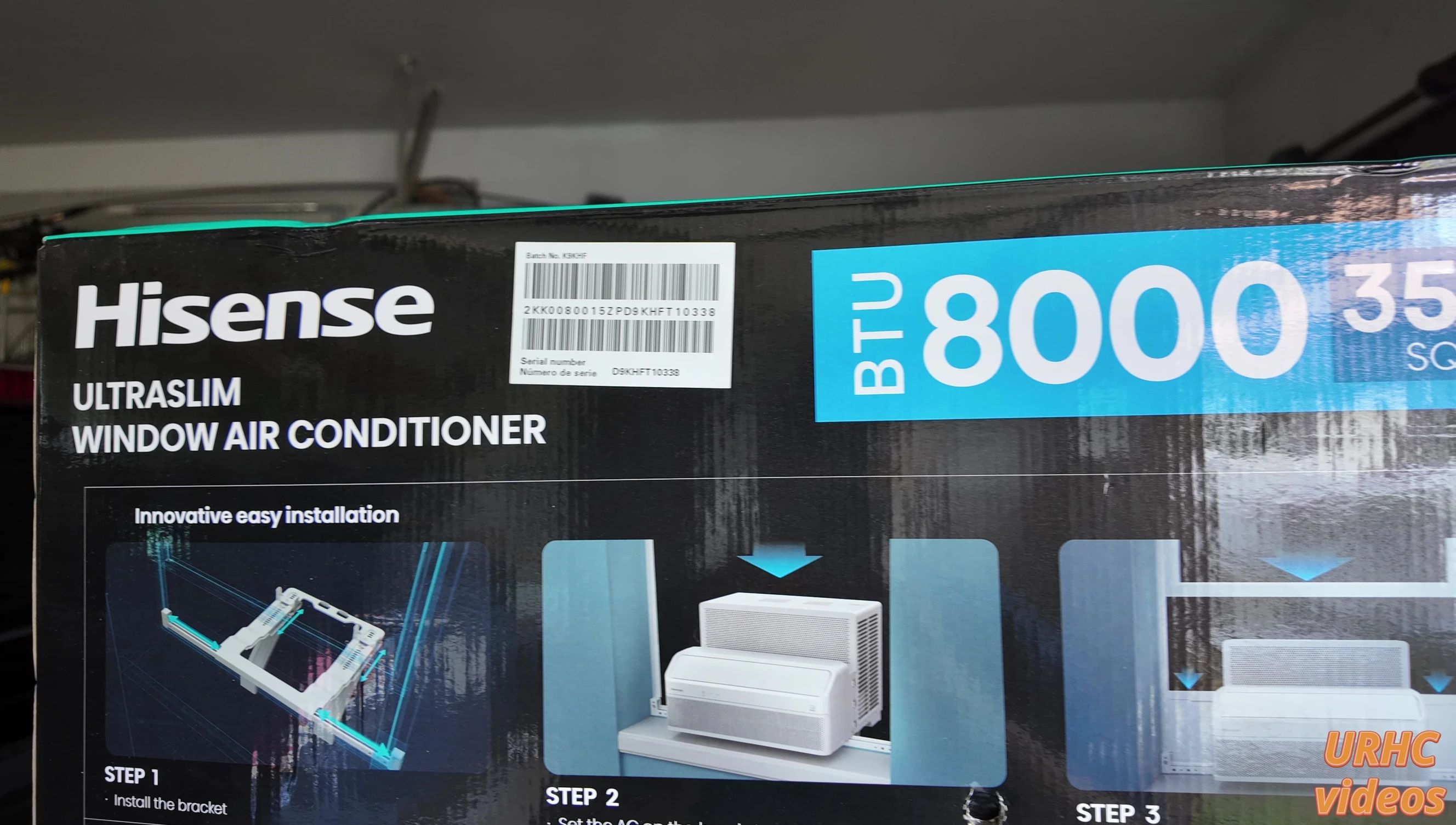This review dives into the Hisense 8000 BTU window air conditioner, focusing on its performance and suitability for solar-powered homes. Driven by a dramatic increase in electricity costs, the author sought energy-efficient appliances and found this unit to be a surprisingly quiet and efficient cooling solution. The review details the unit's power consumption, its integration with a home solar system, and the overall experience of using it, both in terms of its performance and installation process. Key features discussed include its low decibel operation, Wi-Fi connectivity, and surprisingly low wattage draw, even during peak usage.The author thoroughly examines the AC unit's energy efficiency, highlighting its ability to run effectively on solar power, supplemented by batteries for nighttime use. This makes it an attractive option for those looking to reduce their reliance on the grid and minimize electricity bills. The review covers both the positive aspects—the quiet operation, efficient cooling, and successful solar integration—and the challenges faced during installation, providing a balanced and informative perspective on this energy-saving appliance.
Pros And Cons
- Quiet operation
- Energy efficient
- Low power draw (average 135 watts, peak 335 watts)
- Includes remote control with quiet mode
- Wi-Fi enabled, compatible with Alexa and Google
- Inverter technology
- Good for up to 350 square feet
- Difficult installation
- Poor instructions
- Unknown long-term durability
Read more: Nuwave PIC Titanium Induction Cooktop Review: A Mixed Bag of Features
Soaring Energy Costs and the Search for Savings
My electricity bills skyrocketed from 14 cents to 33.5 cents per kilowatt-hour in just over a year. This drastic increase prompted me to explore ways to reduce energy consumption, leading me to consider solar power as a solution.

I started looking for energy-efficient appliances to help lower my electricity usage. The high cost of electricity makes energy efficiency a crucial factor in my appliance choices.
The goal was to significantly lower my dependence on grid electricity and utilize solar power as the primary source of energy for my home appliances.
Introducing the Hisense 8000 BTU Window AC Unit
I found this Hisense 8000 BTU window AC unit at Costco, and I'm incredibly impressed. It's the quietest and most efficient window AC unit I've ever owned.

It's remarkably quiet, even on higher settings. The noise level is significantly lower than other units I've previously used.
A key feature is its impressive energy efficiency; even during hot weather, its wattage draw remains relatively low.
Performance and Energy Consumption
On average, it draws around 135 watts, although it can spike to 335 watts when initially turned on. This is still relatively efficient for an AC unit of this size.

I've been monitoring its power consumption for two weeks, and it performs consistently well. The energy usage is far lower than my expectations for such a cooling solution.
Running it on solar power has been amazing, showcasing its energy-efficient design and the effectiveness of my solar setup.
Features and Specifications
This is an 8,000 BTU unit, suitable for spaces up to 350 square feet. It features Wi-Fi connectivity, allowing for control via Alexa or Google Assistant.

The unit boasts a quiet mode perfect for nighttime use, and it has a remote control for added convenience. The design is very stylish and discreet.

Its inverter technology ensures smooth and quiet operation. The split design, with the compressor outside and air handler inside, contributes to its quietness.
Installation and Noise Levels
Installation was challenging due to poor instructions, taking about an hour. The bracket installation process was surprisingly difficult.

The unit operates at a low 37 dB, making it remarkably quiet. Most of the noise generated is from the outdoor compressor unit.

The actual installation process depends heavily on your window type. Make sure to check if your windows are compatible before purchase.

Solar Integration and Overall Performance
I'm running this AC unit on solar power, supplemented by additional W-hour batteries for overnight and cloudy days. The system has been working flawlessly.

The solar setup powers several appliances, including two fridges, two freezers, TVs, lights, and now the AC unit. This setup is a significant reduction in electricity costs.
On sunny days, the batteries are fully recharged within three hours, minimizing the need for grid power. I've been able to significantly reduce the running time of the central AC system.
Conclusion and Recommendation
The Hisense 8000 BTU window AC unit is a fantastic energy-efficient option, especially if you're running on solar. Its quiet operation is a major plus.

While installation was challenging, the quietness, energy efficiency, and integration with my solar setup make it worthwhile. The long-term reliability remains to be seen.
I highly recommend this unit to anyone looking for a quiet, efficient, and potentially solar-powered window AC. Cost is an important consideration, but in the long run, the energy savings and reduced reliance on the grid will help compensate for the higher upfront investment.
